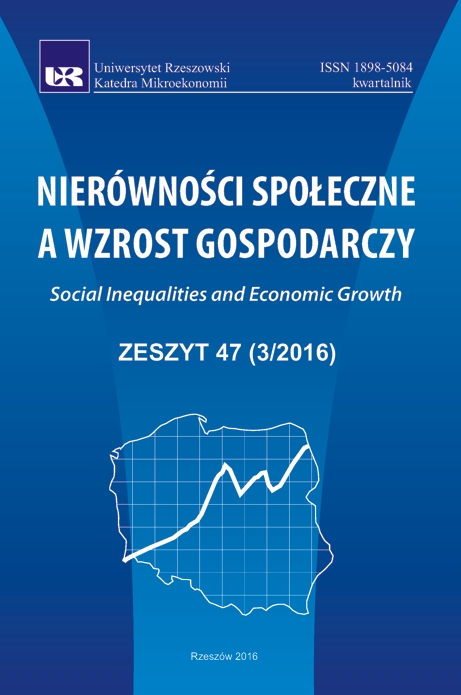Pro-growth Orientation of Policy towards the Roma in Europe
DOI:
https://doi.org/10.15584/nsawg.2016.3.22Keywords:
Roma, cohesion, European Union, growth, developmentAbstract
The EU is focused on the pursuit of the objectives of economic, social and territorial cohesion. They are closely linked with sustainable growth, which is impossible without the development in these areas. The EU Roma strategy is strongly linked to the Europe 2020 strategy, aimed at cohesion objectives. The practical realization of pro-Roma strategy assumptions is entrusted to the Member States. In this regard, it comes to concretization of EU framework principles in accordance with their developmental orientation. However, taking into account the final stage of implementation of the EU, being the practical implementation of measures addressed to Roma, there is a problem with different systems of values. Objectives of the European Union are based primarily on the development and pursuit of growth. Roma culture-shaped by the need for survival – is associated with a value system which is based on the duration, permanence and strong intracommunity ties. Assessing with this point of view progrowth orientation of Roma policy, we should adopt other criteria than those resulting from the Europe 2020 strategy. However, even the Human Development Index is not possible to assess fully appropriate to the system of Roma culture. Therefore the most appropriate are the EU's progrowth policy orientation evaluation criteria. The basis for this assessment are the assumptions set out in the EU Framework and the annual European Commission communication summarizing the progress made by Member States. On this basis, it can be stated that the EU Roma policy is focused on economic growth and social development.Downloads
Download data is not yet available.
Downloads
Published
2020-11-11
How to Cite
Szewczyk, M. (2020). Pro-growth Orientation of Policy towards the Roma in Europe. Social Inequalities and Economic Growth, 3(47), 290–301. https://doi.org/10.15584/nsawg.2016.3.22
Issue
Section
Articles
License
Copyright (c) 2016 University of Rzeszow

This work is licensed under a Creative Commons Attribution-ShareAlike 4.0 International License.


